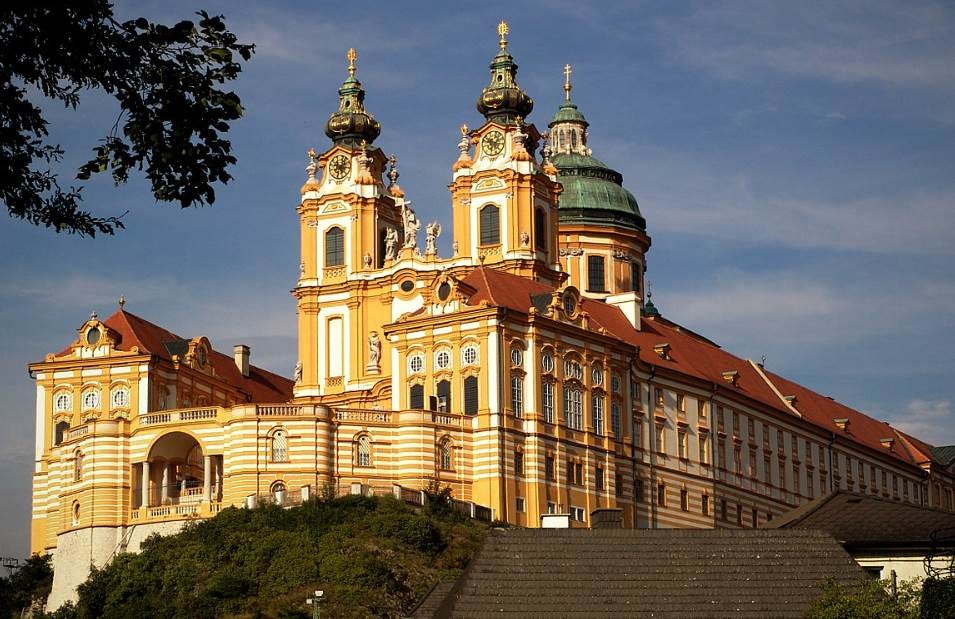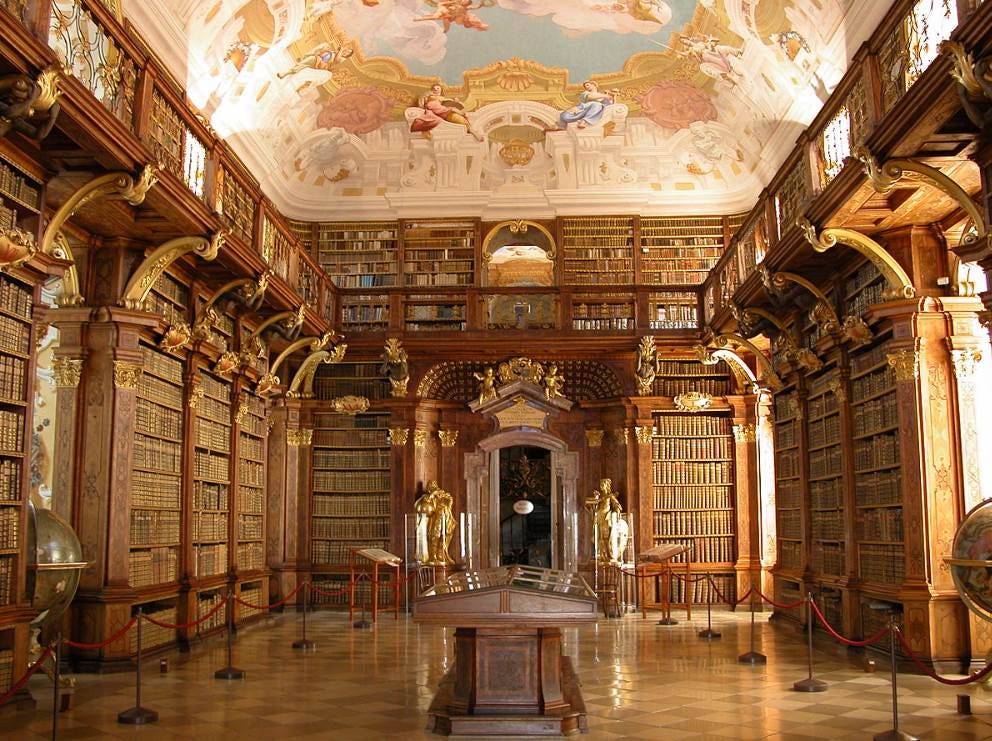Melk Abbey doesn’t just sit on a hill, it has seen history pass by. Sitting above the Danube River in northeastern Austria, it overlooks the town of Melk, a quiet place of just over 5,000 people. But the Abbey? It’s anything but quiet.
It was founded in 1089, but it didn’t begin as a monastery. Rather as a castle donated by Leopold II, the Margrave of Austria. The Benedictine monks from Lambach Abbey turned that fortress into something far more enduring. They didn’t just build walls; they built a legacy. Over centuries, they expanded it. In the 12th century, they added a school. That same school—Stiftsgymnasium Melk—is still teaching students today, nearly 900 years later.
By the 18th century, Melk needed a new face. Jakob Prandtauer, a Baroque architect, reimagined the Abbey’s medieval bones into the masterpiece we see today. He didn’t live to see it finished, but his vision dominates the Wachau Valley: golden facades, a massive dome, twin towers, and frescoes that pull your eyes upward. Inside, there’s a library that once ranked among Europe’s top centers for manuscript production. One staircase, winding like a seashell, even recalls the famous Bramante Staircase in the Vatican.
It’s not just beautiful—it’s resilient. Melk Abbey survived Joseph II’s dissolution of monasteries. It survived Napoleon. It even survived the Anschluss, when churches were seized by the state. Then came a fire in 1974. A lesser place would have faded. Instead, Melk was restored between 1978 and 1995—faithfully, fully, and fiercely.
The reason Melk Abbey still captivates isn’t just its art or architecture. It’s the way everything is built around story. Around permanence. Around purpose. Its builders thought in centuries. They obsessed over the frame. They designed something meant to last.
And it has. Through war, politics, fire, and time.
Here is something to ponder: what are we building that will still matter in 2300?




